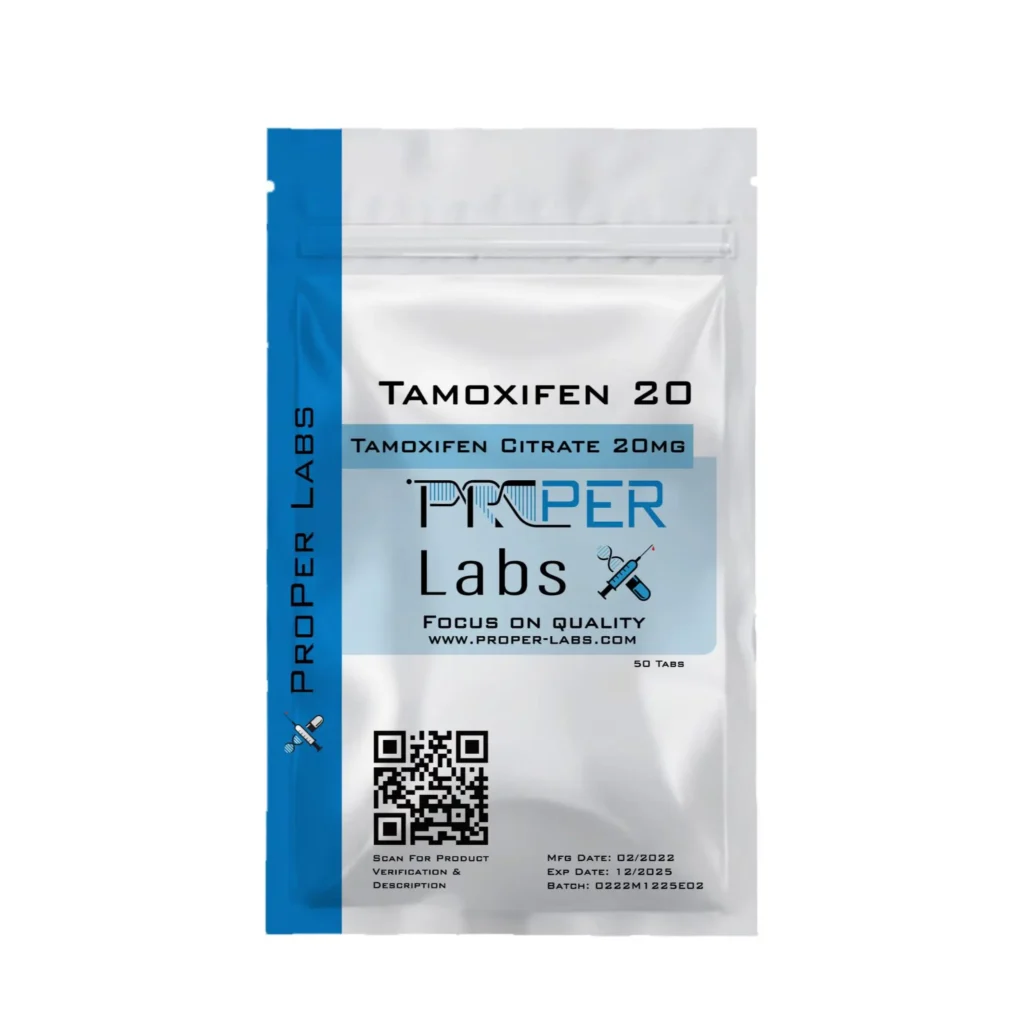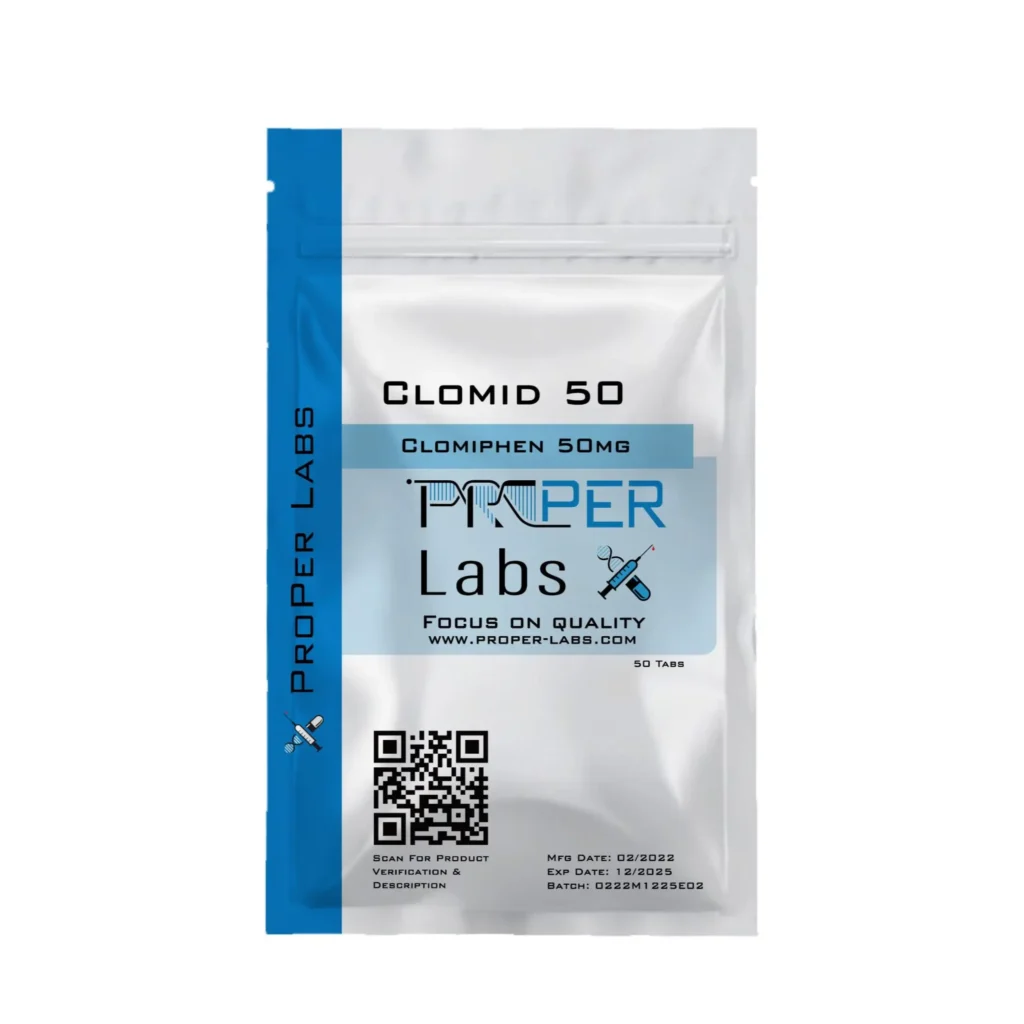Your bodybuilding progress depends on how well you manage your hormones. Most people focus on testosterone, but estrogen management plays an equally significant role to achieve optimal muscle growth and maintain gains.
Selective estrogen receptor modulators, commonly known as SERMs, have become vital tools for bodybuilders. These compounds differ from traditional estrogen blockers and provide targeted hormone control that prevents unwanted side effects while supporting muscle development. You can expect better recovery when you use them correctly. Let me show you how these modulators work, their types, and the safe ways to use them in your fitness experience.
What are SERMs?
Selective estrogen receptor modulators (SERMs) are sophisticated compounds that interact with estrogen receptors throughout the body. These compounds work differently from traditional hormone blockers. They can selectively activate or block estrogen effects based on the target tissue .
SERMs fall into five distinct chemical groups: triphenylethylenes, benzothiophenes, tetrahydronaphthalenes, indoles, and benzopyrans . Research shows these compounds can reduce breast cancer risk by up to 40% in certain populations .
Let’s get into the three most relevant SERMs for bodybuilding:
Tamoxifen (Nolvadex)

Tamoxifen is the classic SERM choice that offers milder effects than its alternatives. Scientists developed it in the 1970s to treat breast cancer. Bodybuilders now use it to reduce gynecomastia symptoms. Research indicates it can reduce breast cancer recurrence by 30% to 50%. This shows its strong anti-estrogenic effects in breast tissue.
Clomiphene (Clomid)

Clomiphene stands out as a more aggressive option that works especially well for post-cycle therapy. It creates substantially higher luteinizing hormone (LH) and follicle-stimulating hormone (FSH) spikes than Tamoxifen. Doctors originally prescribed it for fertility treatment. The bodybuilding community values it because it stimulates testicular activity and helps manage testosterone levels .
Raloxifene (Evista)
Raloxifene is a second-generation SERM that delivers more refined and targeted effects . It binds more effectively to breast tissue receptors compared to other SERMs . Clinical studies show it can reduce vertebral fracture risk by up to 30% in postmenopausal women . Bodybuilders mainly use it to prevent gynecomastia.
Key Characteristics of SERMs:
- They act as estrogen agonists in some tissues while blocking effects in others
- They maintain bone density while blocking estrogen effects in breast tissue
- They create tissue-specific responses through unique receptor interactions
- They modulate hormones without completely suppressing estrogen
These compounds are essential tools in bodybuilding to manage estrogen-related side effects and maintain hormonal balance. Their selective action makes them valuable for post-cycle therapy and ongoing estrogen management.
How do SERMs work?

Let’s get into the complex mechanisms that show how selective estrogen receptor modulators work in our bodies. These compounds follow fascinating biological pathways that make them valuable tools for bodybuilding applications.
Mechanism of Action
The molecular level reveals that SERMs work as competitive inhibitors of estrogen binding to estrogen receptors (ERs). These compounds connect with two distinct receptor subtypes – ERα and ERβ. The sort of thing I love about them is knowing how to bind to estrogen receptors without being steroids themselves .
The process follows several vital steps:
- Binding to estrogen receptors in target tissues
- Inducing conformational changes in protein structure
- Promoting receptor dimerization
- Facilitating interaction with coactivator molecules
Tissue Selectivity
SERMs demonstrate remarkable tissue selectivity in their actions. They can work as estrogen agonists in some tissues while acting as antagonists in others. This selective behavior depends on:
- Bone and Cardiovascular System: Acts as an estrogen agonist
- Breast and Brain: Functions as an antagonist
- Uterine Tissue: Shows mixed agonist/antagonist effects
Three main factors create this tissue specificity:
- Differential expression of ER subtypes in various tissues
- Varying levels of co-regulatory proteins
- Distinct conformational changes induced by ligand binding
Bioavailability and Half-Life
SERMs’ ability to work in our bodies depends substantially on their bioactivation pathways. Scientists have identified four distinct classes of electrophilic metabolites that form from SERMs:
- Carbocations
- Quinone methides
- Diquinone methides
- O-quinones
Each SERM’s metabolic profile depends on its specific structure and reactivity. Cytochrome P450 is a vital component in this process. It hydroxylates compounds like tamoxifen at the α-position, which affects their overall bioavailability.
These mechanisms help explain why SERMs have become valuable tools in bodybuilding. They can selectively modulate estrogen activity in different tissues, which makes them effective at managing hormone-related side effects while maintaining beneficial effects in other systems.
Common Uses of SERMs
Selective estrogen receptor modulators have emerged as versatile compounds that serve multiple purposes in medical and bodybuilding communities. These medications benefit different patient populations and athletic contexts.
SERMs play significant roles in several medical conditions:
- Treatment and prevention of ER-positive breast cancer, which affects 67-80% of women and 90% of men
- Management of osteoporosis, with studies showing significant reduction in fracture risks
- Fertility treatment, especially when dealing with infertility in both men and women
- Prevention of breast cancer recurrence post-surgery
Bodybuilders employ SERMs mainly for Post Cycle Therapy (PCT). Research shows Clomid’s effectiveness in treating hypogonadism safely with minimal side effects, even during long-term use.
Different SERMs’ versatility becomes clear through their specific applications:
Clomiphene (Clomid) proves most effective for PCT by stimulating natural testosterone production through increased LH and FSH release. Its effectiveness shows in treating secondary hypogonadism, especially in cases that result from extended steroid use.
Tamoxifen (Nolvadex) treats breast cancer and addresses gynecomastia. Athletes often combine clomiphene and tamoxifen to improve their PCT protocol results.
Raloxifene prevents and treats postmenopausal osteoporosis while reducing invasive breast cancer risk. Recent clinical trials show its benefits for bone and mineral metabolism disorders and its help in reducing cardiovascular risk factors.
These compounds’ value lies in their ability to prevent fractures and reduce bone mineral density loss while addressing other health concerns. Lasofoxifene shows better results than raloxifene in improving lumbar spine bone mineral density, while matching its effects on hip bone density.
Healthcare providers now prescribe these compounds more frequently to prevent and treat various conditions, especially where hormone modulation matters most. Newer SERMs like arzoxifene show promise for osteoporosis treatment and breast cancer prevention.
Effectiveness of SERMs
Studies have shown the most important effects of selective estrogen receptor modulators in both clinical and athletic settings. The scientific evidence backs their effectiveness in many different applications.
Clinical trials reveal that SERMs offer remarkable tissue-specific benefits. Both tamoxifen and raloxifene showed notable improvements in cardiac, respiratory, and skeletal muscle functions in muscular dystrophy research. These compounds can cut down muscle pathology within a month of treatment.
SERMs play a vital role in performance enhancement through:
- Stimulating anabolism to increase muscle mass
- Boosting strength development
- Better recovery from exercise training
- Keeping hormonal balance during post-cycle therapy
- Better bone density
Clomid works best in post-cycle therapy after heavy SARM cycles. But while animal studies strongly back performance enhancement benefits, human data remains nowhere near as conclusive.
The RUTH study with 10,101 postmenopausal women showed how raloxifene cuts down invasive breast cancer risk and clinical vertebral fractures. Lasofoxifene boosts lumbar spine bone mineral density better than raloxifene, with studies reporting about 3% increase in both lumbar spine and femoral neck BMD.
Research into cardiovascular effects shows that raloxifene cuts down serum total and LDL cholesterol levels similar to estrogen. The PEARL pivotal fracture trial reported a 42% reduction in vertebral fractures and 27% fewer nonvertebral fractures.
Male athletes benefit from clomiphene especially when their testosterone levels drop but testosterone/estradiol ratios stay normal. The compound boosts testicular activity and helps maintain hormonal balance.
Note that while these compounds work well, the World Anti-Doping Agency has banned them. They show fewer side effects than more potent anabolic agents but still carry potential risks that need careful attention.
Dosage and Duration of Use
The right dose of selective estrogen receptor modulators depends on personal needs and cycle length. Our experience shows that starting with lower doses works best, and we adjust based on how people respond.
The recommended daily dose of Enclomiphene Citrate ranges from 25 to 100mg, split into multiple doses. Arimidex cycles usually start at 0.5mg twice weekly from the second week.
The timing of Post Cycle Therapy (PCT) is vital to keep your gains and balance hormones. PCT should start right after SARM cycles end. Steroid cycles need about a week’s gap to work better. The typical PCT runs for:
- 4-6 weeks for most cycles
- Extended periods if needed, based on:
- Type of compounds used
- Individual response
- Cycle duration
Our data shows testosterone levels might take up to four months to return to normal without help. Users often face symptoms during this time that the right PCT can reduce.
These safety protocols are the foundations of success:
- Begin with the lowest dose that works
- Check hormone levels often
- Take supplements with meals to protect your stomach
- Keep your doctor in the loop
The best cycles last 8-12 weeks. High doses over long periods can suppress testosterone. Daily doses above 10mg increase your risk of hormone problems.
You should test any new protocol for 2-4 weeks before starting a full cycle. This helps you learn about your body’s response and make changes if needed. Regular blood work during cycles lets you track your liver, kidneys, tumor markers, and prostate health.
Advanced protocols that stack different compounds need extra care with timing and doses. Common stacking protocols include:
- Strength Focus: 2-3 week cycles with specific compound mixes
- Cutting Phase: 12-week cycles with adjusted doses
- Body Recomposition: 9-12 week protocols that combine multiple compounds
Doctor supervision becomes especially important with complex protocols. Every cycle needs regular health checks and proper post-cycle therapy to maintain hormone balance and overall health.
Side Effects and Risks
Selective estrogen receptor modulators are powerful compounds that come with their share of what it all means. You need to think about these risks to make informed decisions about using them.
Users of tamoxifen often experience these side effects:
- Hot flashes and night sweats
- Irregular periods or spotting
- Decreased libido
- Vaginal dryness or discharge
- Menstrual cycle changes in pre-menopausal individuals
Understanding more serious complications shows that users might face risks of blood clots in large veins (deep venous thrombosis) and lungs (pulmonary embolism). Users who haven’t gone through menopause might experience bone loss.
Male athletes and those assigned male at birth (AMAB) show specific side effects like hot flashes, sexual issues, and fatigue. Their risk of blood clots is nowhere near as common.
Raloxifene users report distinct side effects in the first six months of therapy. These include leg cramps, swelling in extremities, and flu-like symptoms. Joint pain and sleep disturbances are also common.
Hot flashes might be manageable, but some symptoms just need emergency care right away. Here are the critical warning signs that require immediate medical attention:
- Weakness on one side of the body or face
- Speech difficulties
- Sudden or severe headaches
- Unexpected shortness of breath
- Sharp pain in the chest, arm, shoulder, or jaw
Most side effects from anabolic compounds go away after stopping use. But hormone disruption can lead to by a lot increased health risks. These include liver damage, cardiovascular problems, and mood changes.
Patient monitoring focuses on allergic reactions that show up as swelling or rashes. Extreme fatigue affects some users, so they should be careful with activities like driving.
Different SERMs have unique risk-benefit profiles. To name just one example, see tamoxifen’s excellent efficacy in its primary uses, but it might cause uterine cancer and cataracts. Regular monitoring and proper dosing help minimize these risks while keeping therapeutic benefits.
These potential complications are the foundations of our preventive measures and monitoring protocols. Regular health screenings and open communication with healthcare providers remain vital throughout SERM use.
Conclusion
SERMs are vital tools that serious bodybuilders use to control their hormonal balance. Studies show these compounds work well in many ways – they help with post-cycle therapy and prevent unwanted side effects from intense training. Their unique way of working differently in various tissues makes them valuable to bodybuilders who want to keep their gains and minimize risks.
You need to pay close attention to dosing schedules, timing, and possible side effects to get the most from SERMs. Medical oversight and regular checkups are the foundations of using these compounds safely and effectively. Regular blood work and health screenings help maximize results and protect your long-term health.
Smart planning about suppliers and costs helps bodybuilders make better choices about these compounds. Finding reliable suppliers and knowing what to expect about expenses are key parts of a successful protocol.
These compounds can really help, but you should think over your personal situation, goals, and risk factors before starting any SERM protocol. Your success with these modulators comes from understanding what they can and cannot do. This knowledge lets you tap into their benefits while keeping possible complications low.
FAQs
What are the potential severe side effects of using selective estrogen receptor modulators (SERMs)?
Selective estrogen receptor modulators (SERMs) can occasionally lead to serious side effects such as stroke and pulmonary embolism. It is crucial to seek immediate medical help or call 911 if you experience symptoms like weakness on one side of your body or face, or difficulty speaking.
How does estrogen influence muscle building in bodybuilding?
Estrogen does not enhance basal muscle protein synthesis acutely; however, it does boost the anabolic response to exercise. Over time, this enhanced response to exercise can lead to an increase in muscle mass, as observed in long-term studies.
Are selective estrogen receptor modulators (SERMs) classified as steroids?
No, selective estrogen receptor modulators (SERMs) are not steroids. They are synthetic, nonsteroidal agents that bind to estrogen receptors, producing either estrogen-agonist or estrogen-antagonist effects depending on the target tissue.
What occurs when estrogen receptors are inhibited by SERMs?
When selective estrogen receptor modulators (SERMs) block estrogen receptors, they prevent estrogen from attaching to breast cancer cells. This blockade means that the cancer cells do not receive estrogen’s signals to grow and multiply, thereby inhibiting their growth.
References
[1] – https://my.clevelandclinic.org/health/treatments/24732-selective-estrogen-receptor-modulators-serm
[2] – https://www.tribuneindia.com/article/news-detail/27931/amp
[3] – https://pmc.ncbi.nlm.nih.gov/articles/PMC4995266/
[4] – https://www.dnaindia.com/lifestyle/report-anastrozole-vs-tamoxifen-nolvadex-pct-which-is-best-and-how-to-create-the-best-pct-regime-3094866
[5] – https://www.uptodate.com/contents/mechanisms-of-action-of-selective-estrogen-receptor-modulators-and-down-regulators
[6] – https://pmc.ncbi.nlm.nih.gov/articles/PMC4154886/
[7] – https://pmc.ncbi.nlm.nih.gov/articles/PMC2517576/
[8] – https://pmc.ncbi.nlm.nih.gov/articles/PMC2860534/
[9] – https://www.sciencedaily.com/releases/2018/03/180320084339.htm
[10] – https://www.sciencedirect.com/topics/chemistry/selective-androgen-receptor-modulator
[11] – https://www.uspharmacist.com/article/recreational-use-of-selective-androgen-receptor-modulators
[12] – https://www.drugs.com/medical-answers/arimidex-cycle-3541843/
[13] – https://bmcsportsscimedrehabil.biomedcentral.com/articles/10.1186/s13102-021-00296-y
[14] – https://www.medicalnewstoday.com/articles/arimidex-bodybuilding
Dr. Grant Fourie, a specialist in male hormones, is based in Cape Town, South Africa. He provides comprehensive treatments for conditions related to low testosterone, such as erectile dysfunction, fatigue, and mood changes. His methods include hormone replacement therapy and other modern treatment options.
Contact me via email or phone to book personal appointment in my clinic: The Village Square, Cape Town - South Africa



